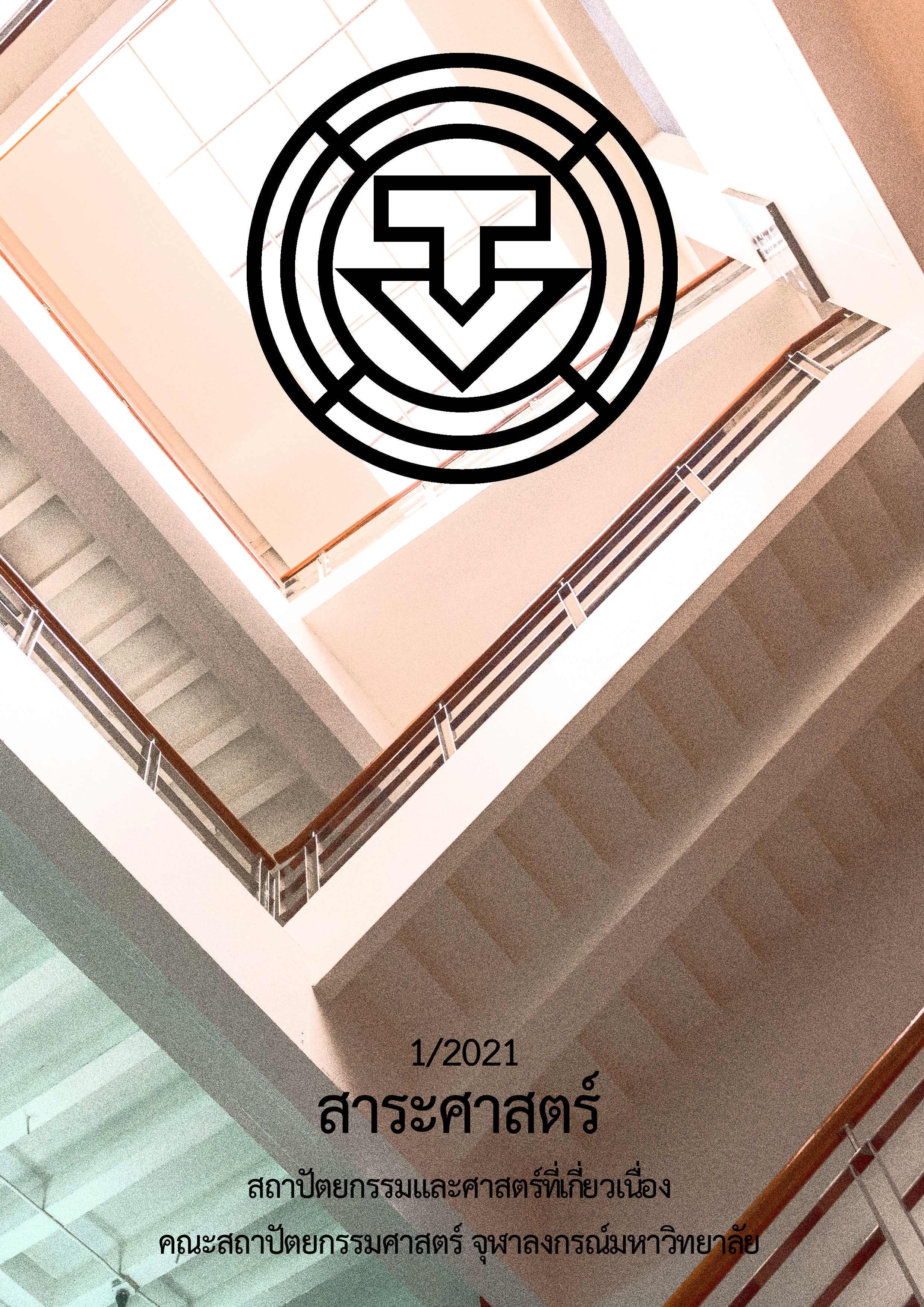Visual Quality Assessment in Cultural Landscape: Case Study of Lop Buri
Main Article Content
Abstract
Lop Buri has been a historic city since the 13th century. Each era reflected the cultures, identities, and arts which emerged into the form of architectures and various valued antiques. With these resources, Lop Buri is still a historic city. Lop Buri Is expanding rapidly resulting in damage to the beauty of landscape and scenery. Considering the beauty of the city is important so that people will realize and appreciate the value of the historic city. The objective of the visual quality assessment was to study the current problems and made it possible to understand the elements of the city which affected the aesthetics. The study results of these elements would lead to a way to preserve the cultural landscape. Moreover, it would deal with the landscape problems to reduce the impact of the area development and lead to city aesthetics. The visual quality assessment would start with a review of the literature related to the concept and aesthetics assessment theory together with creating the questionnaires for collecting data from samples. There were 200 samples divided into 100 residents in Lop Buri and 100 tourists. This study aimed to find the current aesthetics of the city and to analyze the factors that lead to aesthetics and visual pollutions.
The study revealed that residents in Lop Buri were less aware of the city aesthetics than the tourists and wanted to change the scenery of the city due to the landscape problems. As for the tourists, there was a high perception of the current aesthetics of the city, with the view that the old city and the new city coexist, creating a beautiful blend of past and present. The factors that affected the beauty of the landscape depended on the composition and positioning of the architectures. When the eye target was centered together with the straight point of view, it would make the area more prominent. If there were more shade and comfort to the eyes, it would increase aesthetics to the city environment as well. On the other hand, too many hardscapes would decrease the aesthetics. The contrast between colors of the building and the floor created a strong feeling and made the scenery stand out. To improve the city scenery, there should be more green color area and the height and color controlled around the historic site. There should be the city expansion control not to encroach on the historic site.
Article Details
References
ทศพล ชื่นอุปการนันท์. (2549). แนวทางการจัดการการท่องเที่ยวเชิงประวัติศาสตร์เมืองเก่าลพบุรีอย่างยั่งยืน. (วิทยานิพนธ์ปริญญามหาบัณฑิต, จุฬาลงกรณ์มหาวิทยาลัย).
ภาริฉัตร วิริยะ. (2559). การประเมินคุณภาพเชิงทัศน์ของถนนธนะรัชต์–อุทยานแห่งชาติเขาใหญ่. (วิทยานิพนธ์ปริญญามหาบัณฑิต, มหาวิทยาลัยศิลปากร).
รุจิโรจน์ อนามบุตร และ วิลาสินี สุขสว่าง. (2554). การประเมินคุณภาพเชิงทัศนเมืองเชิงบูรณาการพื้นที่เทศบาลนค พระนครศรีอยุธยา จังหวัดพระนครศรีอยุธยา. กรุงเทพฯ: คณะสถาปัตยกรรมศาสตร์ มหาวิทยาลัยศิลปากร.
เอกนฤทน บางท่าไม้ และ สหทัศน์ วชิระนภศูล. (2558). การจัดองค์ประกอบภาพสำหรับภาพถ่าย. นนทบุรี: ไอดีซี พรีเมียร์.
BLM. (1980). Visual resource management program. Washington, DC: BLM.
Burley, Jon Bryan. (2019, September). Visual and environmental quality metrics. Lecture Series let’s talk about Landscape. Talk presents at 2019 Faculty of Architecture, Kasetsart University, Bangkok, Thailand.
De Blij, H. J., & B Murphy, A. (2003). Human geography: Culture, society, and space. New York: John Wiley & Sons.
Lu, D., Burley, J., Crawford, P., Schutzki, R., & Loures, L. (2012). Quantitative methods in environmental and visual quality mapping and assessment: A Muskegon, Michigan watershed case study with urban planning implications. In Jaroslav Burian (Ed.), Advances in spatial planning. (pp.127-142). Rijeka: InTech.
Sitte, C. (1889). City building according to artistic principles. New York: Columbia University.
UNESCO. (2008). Operational guidelines for the implementation of the world heritage convention. Paris: The United Nations Educational Scientific and Cultural Organization.
UNESCO. (2013). New life for historic cities: The historic urban landscape approach explained. Paris: The United Nations Educational Scientific and Cultural Organization.


